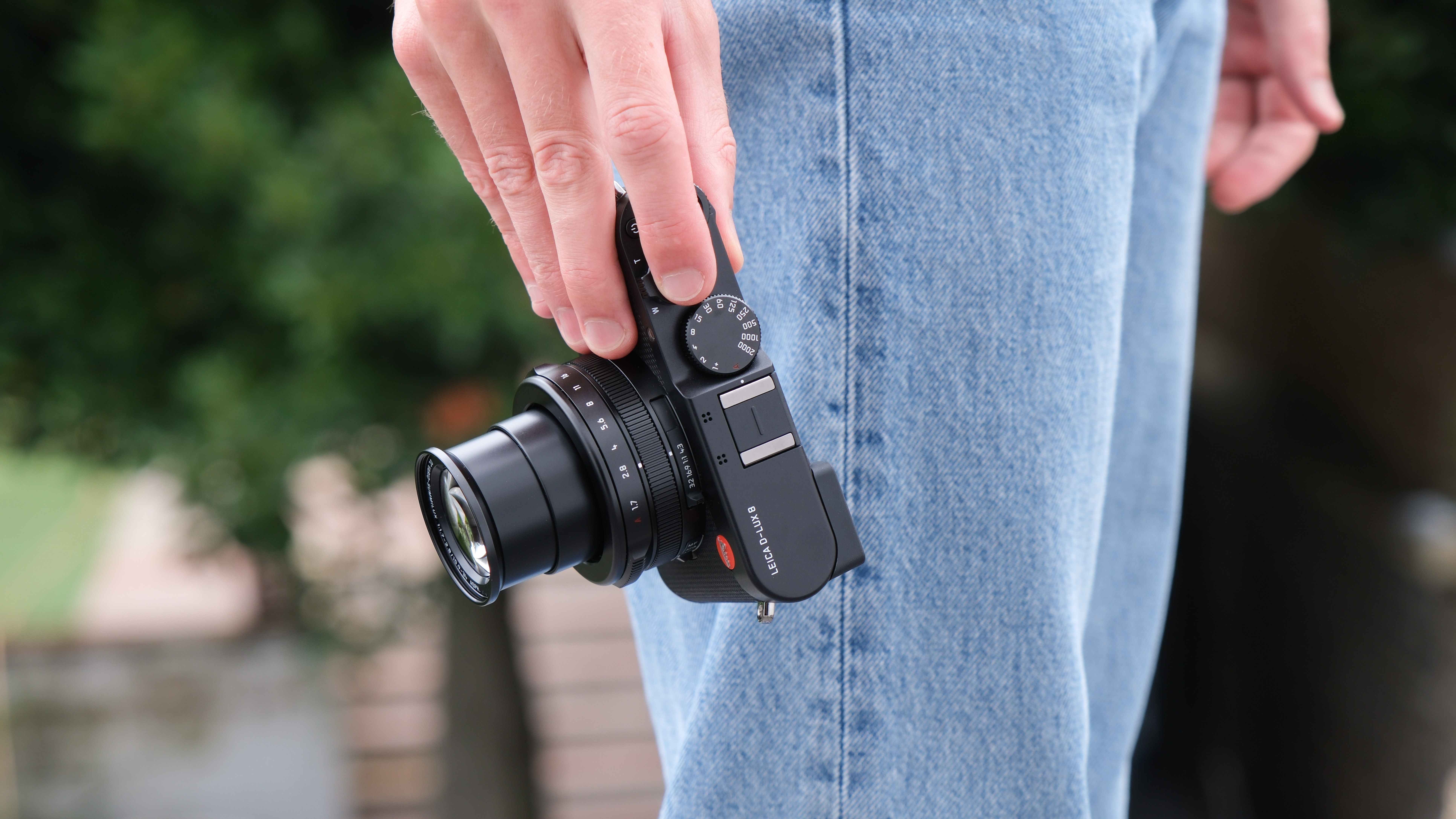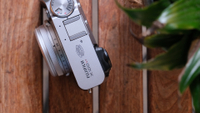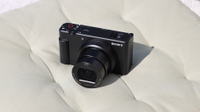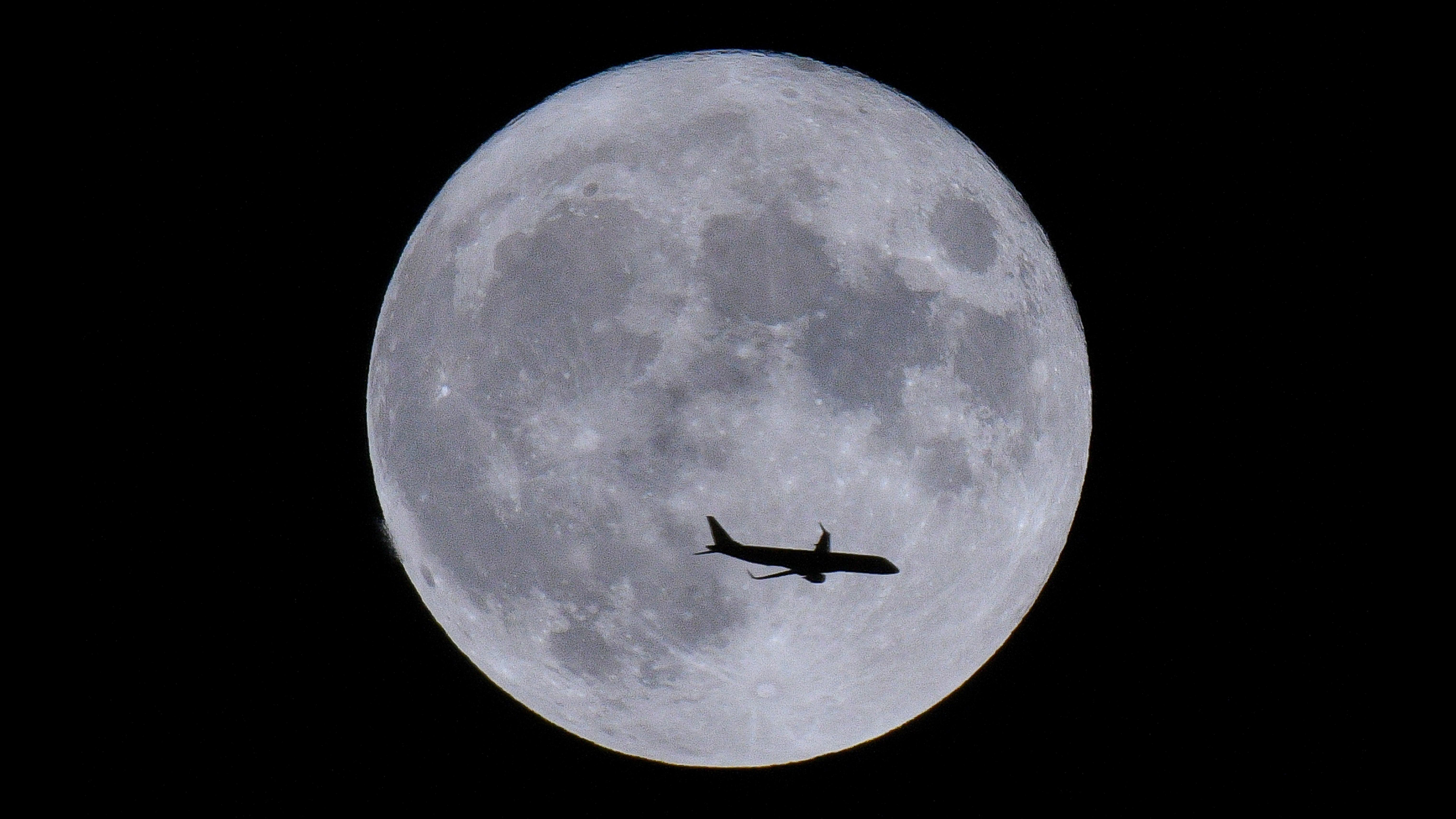Digital Camera World Verdict
Leica has introduced the D-Lux 8, or should I say, re-introduced – a camera essentially identical to its predecessor from six years ago but with a slightly updated design. Inspired by the Leica Q3 it features a more streamlined button and menu system. While some components show their age, the 17MP (4:3) sensor and unique aspect ratio switch still deliver quality images perfect for social media. However, its video capabilities lag behind modern rivals, with poor autofocus and average quality. Despite its flaws, the D-Lux 8 stands out in the sparse premium compact camera market as a fun, straightforward camera that is surprisingly affordable for a Leica.
Pros
- +
Design is top notch and iconically Leica
- +
Still image quality is good
- +
Aspect ratio switcher is useful
- +
Most affordable way to get that red dot
Cons
- -
Video is not great
- -
Photos not especially ‘Leica-esque’
- -
Lens extends quite far
Why you can trust Digital Camera World
The range of the best compact cameras isn’t what it used to be. Options are increasingly limited as most major camera companies have pulled their last remaining models from store shelves over the past couple of years with seemingly no intention of launching replacements.
Yet, ironically, compacts couldn’t be more popular right now. Like the resurgence of film photography, this is likely down to the world-shaping whims of the internet. Starting a few years ago when every Gen-Zer went tearing through their attics looking for nineties relics with CCD sensors for a sense of grungy "authenticity", it has now more sensibly grown into an understanding that perhaps you don't need a huge DLSR or mirrorless cameras for great images, and instead a camera that slips into a back pocket will do nicely.
Like most brands, Leica discontinued its last premium D-Lux compact some years ago. Although it has seen sense to jump on the bandwagon earlier than most and capitalize on this resurging market. But without a new camera to market, what's a brand to do? Well, just pull one out of retirement.
Here we have the Leica D-Lux 8 – although you might notice that not that much changed from the D-Lux 7 (or the Panasonic Lumix LX100 II it is based on).
But then perhaps it didn’t need to change to still be one of the most compelling options in this limited field. Right now, there is nothing quite like the D-Lux 8, but is that enough to still recommend buying a mostly six-year-old camera? Let's find out...
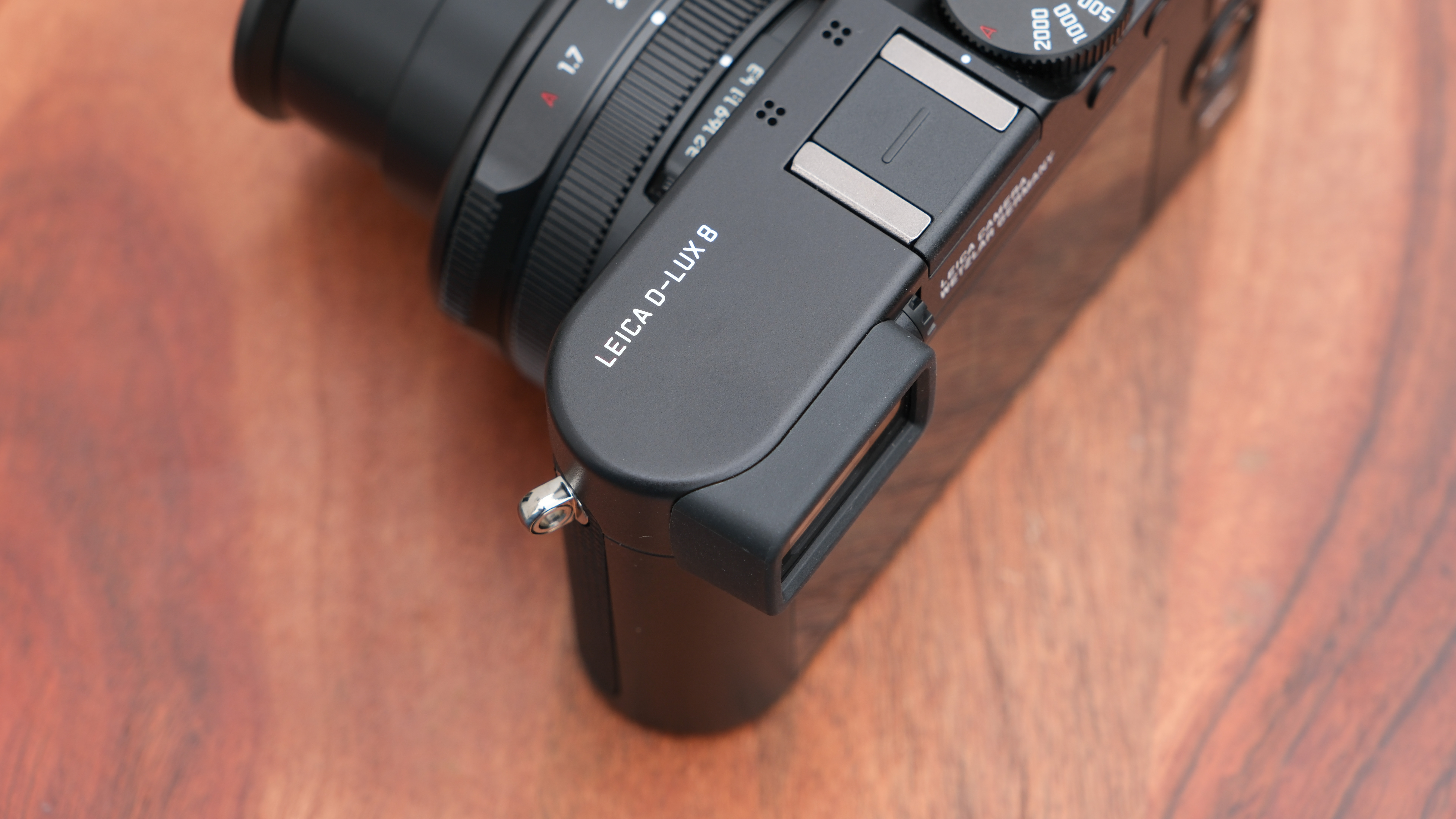
Leica D-Lux 8: Specifications
Sensor | 4/3” CMOS, 21.77 MP (total), 17 MP (effective) |
Lens | Leica DC Vario-Summilux 10.9–34 f/1.7–2.8 ASPH |
| Minimum focus | 50cm (down to 3cm in macro mode) |
Image Stabilization | Visual compensation system |
Video Resolution | 4K 30p, Full HD 60p, HD |
Viewfinder | OLED, 2.36M dots |
LCD Panel | 3” TFT, 1.84M dots |
Storage | UHS-II SD card |
Connectivity | USB-C, HDMI, Bluetooth 5.0, Wi-Fi |
Battery | Rechargeable, 1025 mAh |
Dimensions | 130 x 69 x 62 mm |
Weight | Approx. 397 g (with battery), 357 g (without battery) |
Leica D-Lux 8: Price
Where usually I would be bemoaning the fact that another great Leica camera is beyond the finances of most photographers – with the D-Lux 8, this is not quite the case. The Leica D-Lux 8 costs $1,499 / £1,499 / AU$2,790 at the time of launch.
While it is still a bit of an extravagant purchase, it is in the realm of affordability, costing only $50 more than the world’s current most popular camera, the Fujifilm X100VI, or around the same price as a Sony a6700 and a lens. For cheaper options – a Sony ZV-1 II is around half the price, or the Ricoh GR III is $999 if you can actually get your hands on one.
The problem is frankly finding a camera that compares directly to the D-Lux 8, as nothing I can find has the same combination of 4/3in sensor size, equivalent aperture zoom lens, and EVF. When it comes down to specs, the X100VI, Sony a6700, and most of the modern field absolutely trounce the D-Lux 8 – but they all offer something different. If you find value in the D-Lux 8 really depends if you want this particular style of compact camera. And of course, this is the only one that offers that red-dot logo.
Leica D-Lux 8: Design & Handling
The D-Lux 8 has had a subtle update in design from its predecessor, which was almost a necessity, as the design is one of the few major differences between the two. Ditching the Panasonic-designed back plate, the camera now finally feels more like a Leica camera than ever before, instead of just a rebadged product. In fact, the design is now nearly indistinguishable from the Leica Q3. This is of course to say, it has some serious street-worthy cool. If you are after a camera for its social-cred and red dot badge, then this ticks all the boxes.

It has an all-metal magnesium cast body and a leatherette covering that stretches across the front, but the D-Lux 8 is still very light at just under 400g and is very compact when the lens is collapsed. It wasn’t a hassle to carry around, with it even slipping into the back pocket of my pants. Leica has again decided to go with absolutely no molded grip on the D-Lux 8, but with the camera being the size and weight that it is, I didn't really find this to be an ergonomic issue, even with the lens fully extended. Leica will of course sell you an optional matching grip though should you need it.
But while we are on the subject of the lens size, while it might look all neat and tidy when the camera is off, with X100VI-style pancake proportions, I wasn’t really prepared for how far out the lens was going to come out of the camera for shooting, even for wide angles. Now, this is a wider compact zoom camera issue, and not specific to this camera – you can’t beat physics, but it does make the camera a little more conspicuous when out shooting on the streets versus a prime lens or an internal zoom (for example the new Fuji 16-50mm).
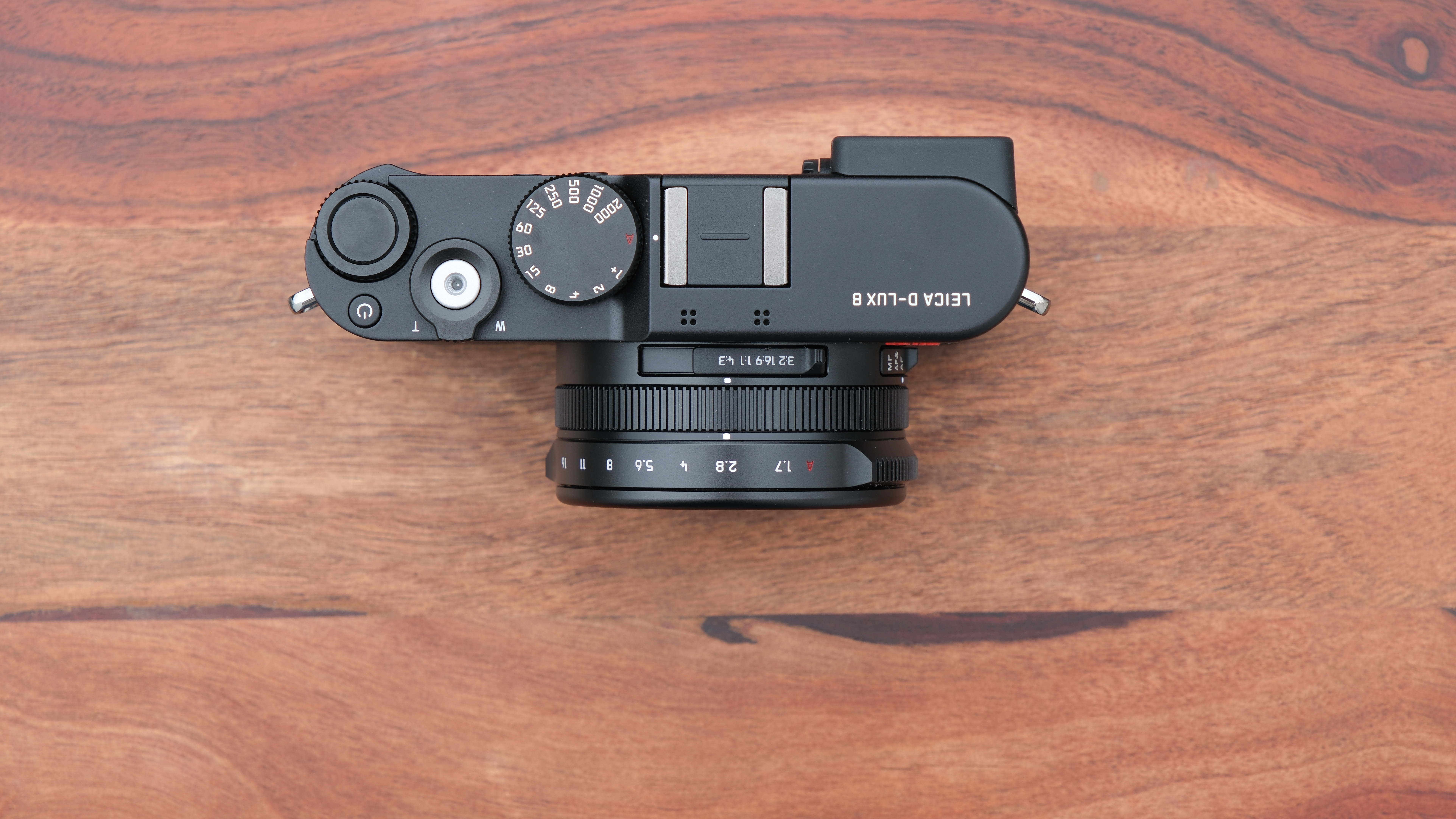
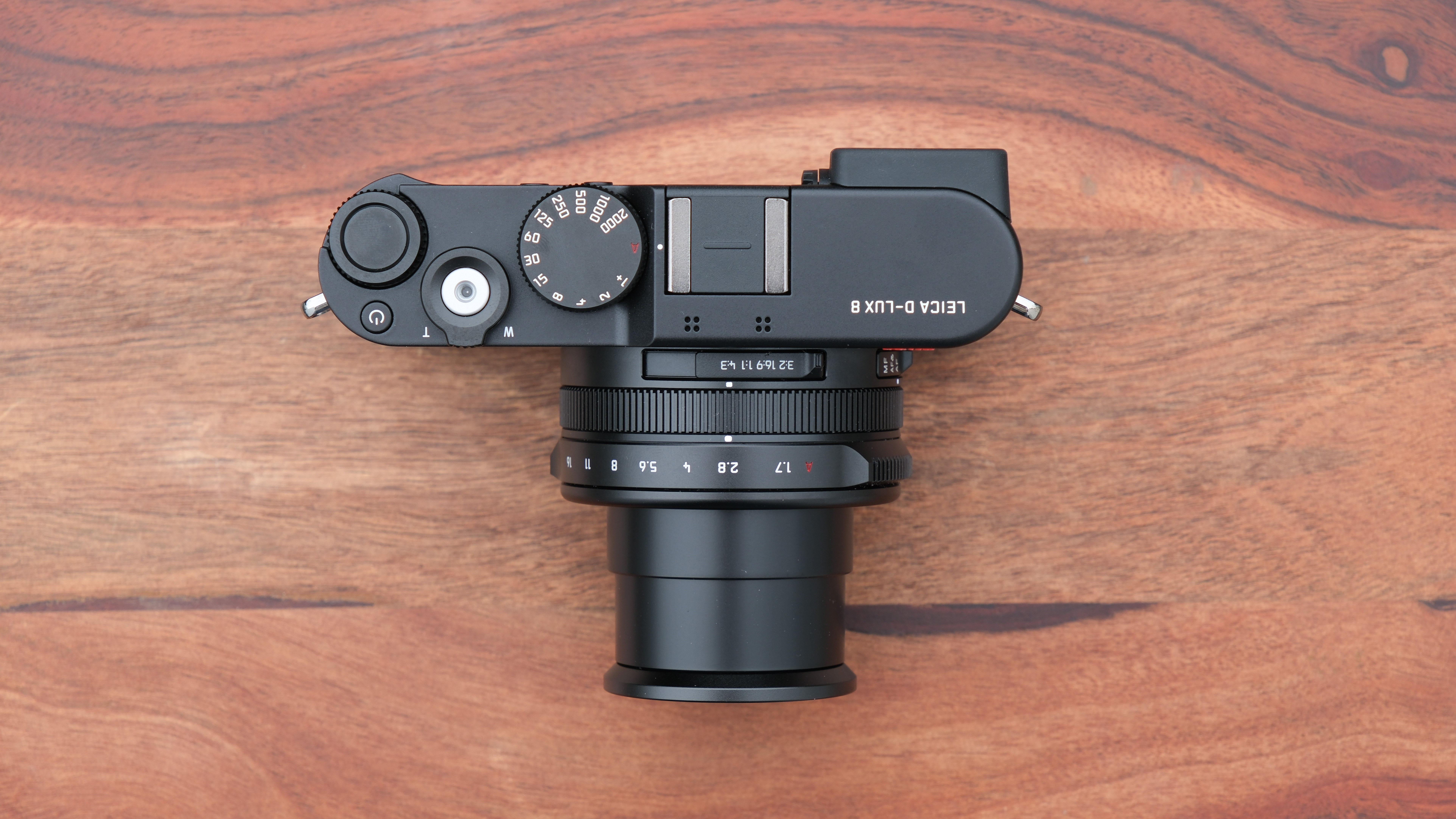
I also fell for the camera's looks in product shots with the lens withdrawn, and in person I found the camera looked markedly less cool with the lens poking out, and it actually inspired me to turn the camera off when not in active use so it looked better – a hidden battery saving feature.
Around back, the button layout from the D-Lux 7, which followed that of the LX100 II, has been replaced in favor of Leica’s cleaner and more minimal system from the Q3. There are two large buttons to access the menu and captures, otherwise, there is a four-way directional d-pad and two function buttons, and up on top there is a shutter speed dial and a dial for exposure compensation. It looks super slick, but anyone who appreciates labeling might be disappointed, as the function buttons and dial functions have been left for you to commit to memory only. However, you can also control the camera settings via the touch screen, which I found the most straightforward method.
The touchscreen on the back is fine for composing images, but it is not the clearest screen I have used on a camera. There is a strange phenomenon where it looks distinctly lower in resolution during focusing, which made me doubt my focus a few times, but it was all fine in the final image. The screen is also static, which means there is no pivot, tilt, or twist, which seems exceptional in 2024.
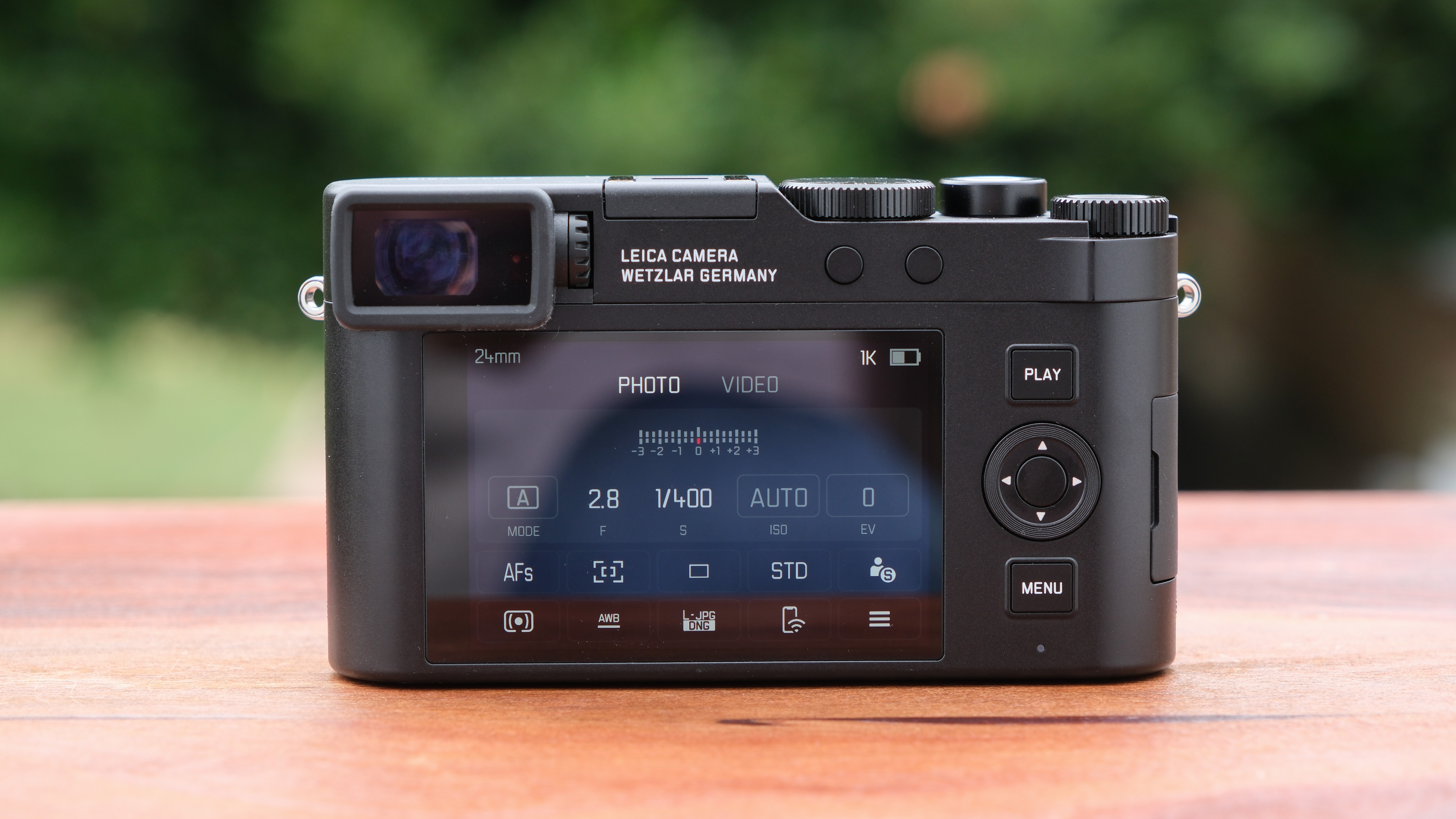
One thing that still sets the D-Lux 8 apart from other compacts is the inclusion of an electronic viewfinder (EVF), which as a photographer first, I really can’t do without in my cameras and has kept me from falling in love with models like the Ricoh GR III or Lumix S9.
The EVF in the D-Lux 8 is actually a lower resolution than in the last model, but it has swapped to a far superior OLED panel. I really enjoyed using the viewfinder, like the camera screen, it isn’t the best one I have used, but it was clear and easy to compose with and didn’t suffer from the same focusing issue I found with the screen.

Leica D-Lux 8: Performance
The D-Lux 8 internally is the same camera as Panasonic launched around six years ago (although some parts predate that). Since it shares the same sensor and lens (and likely processor) as the Panasonic LX100 II and Leica D-Lux 7, it should probably come as no surprise that performance is exactly the same as those previous models.
But somehow, despite camera tech moving on substantially in the last several years, the D-Lux 8 doesn’t feel noticeably outdated when it comes to imaging. I think this is a testament to how well the camera nailed the basics last time around, and the more limited scope of just what I expect a compact camera like this to be able to do.
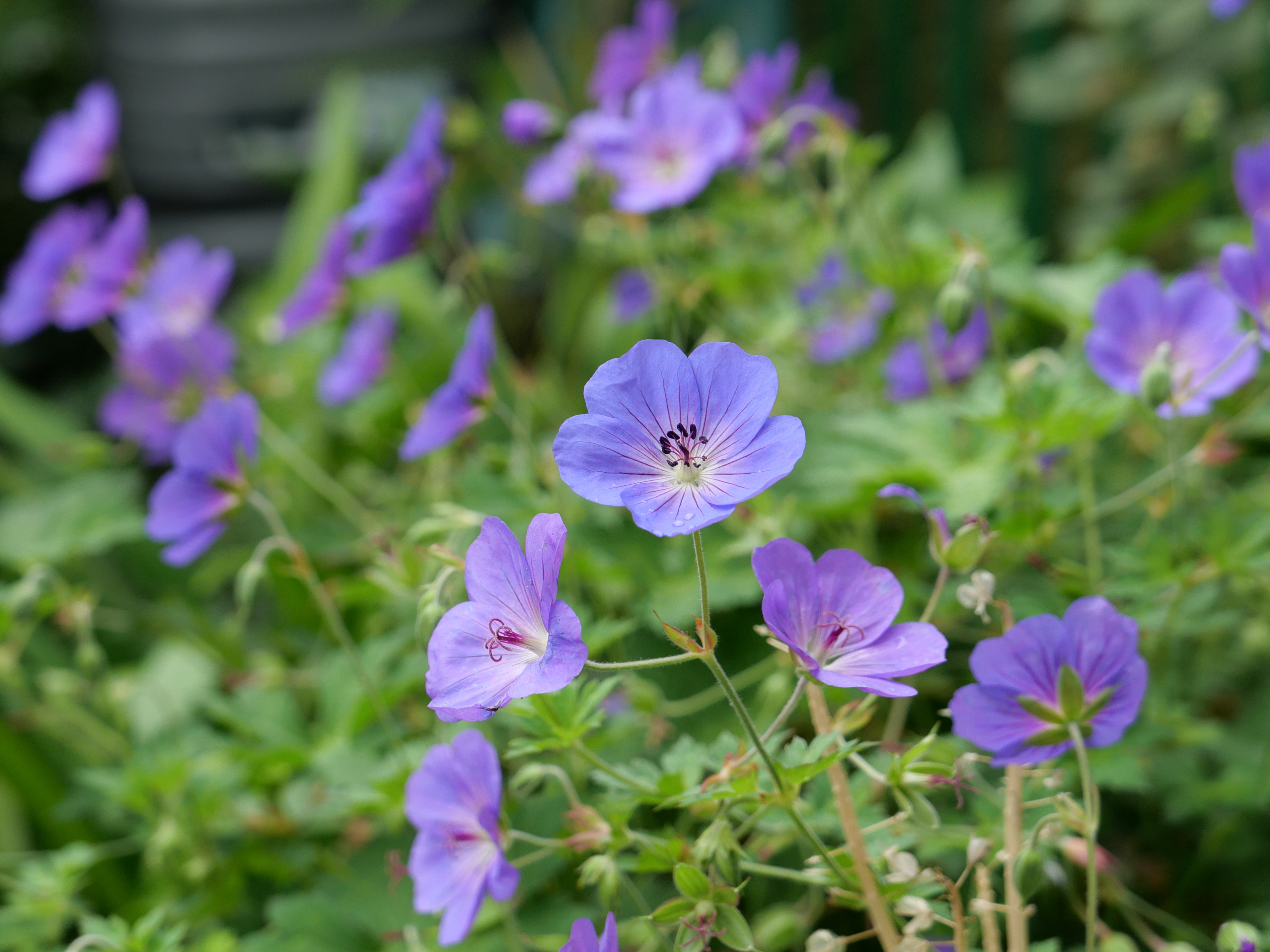
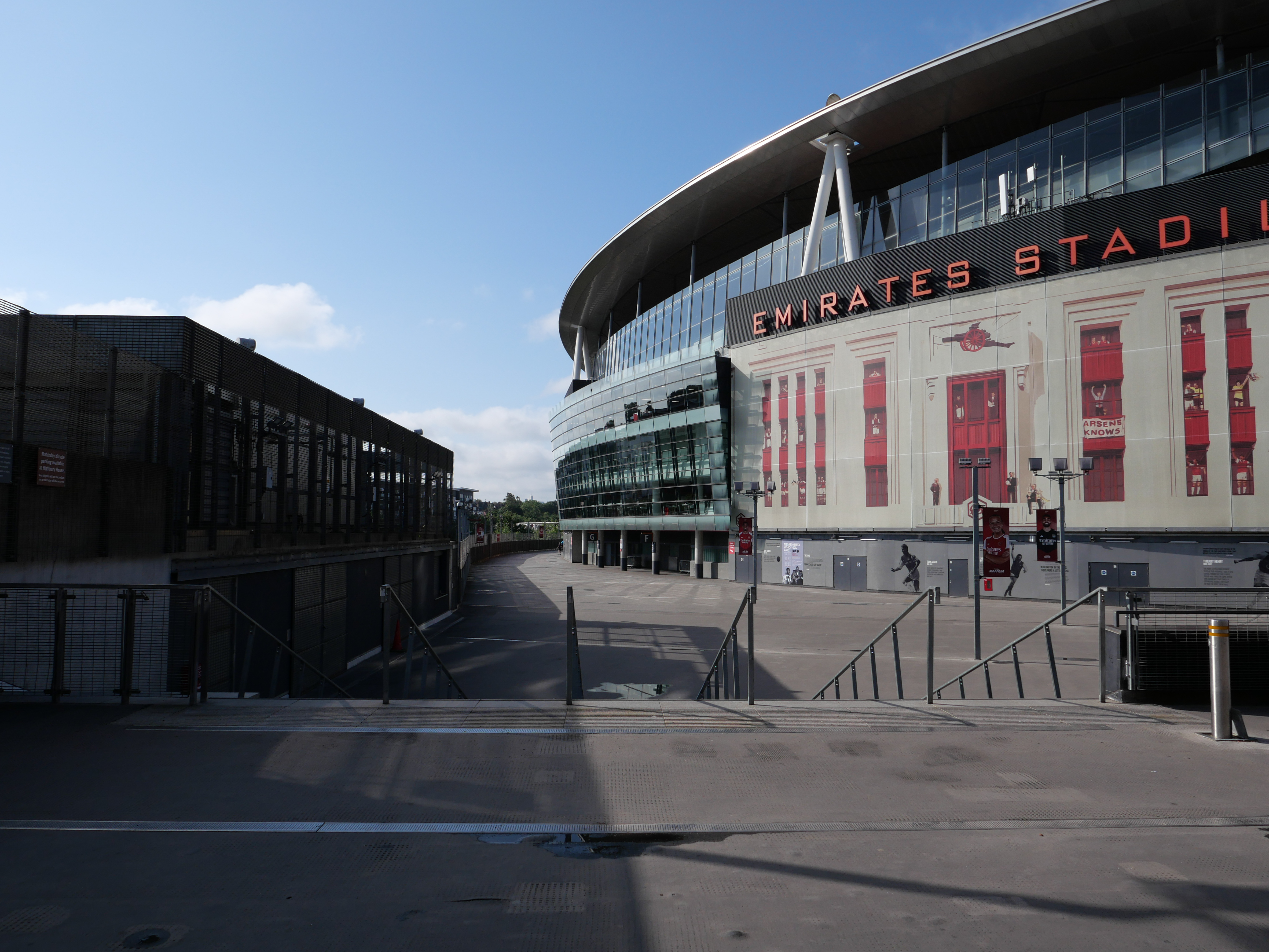
The sensor is still 17MP, which is on the lower side by the standards of today, but it's still more than enough for online and social media. Phone cameras now are increasingly coming packed with 50MP+ sensors, but usually process images down into 12 or 16MP shots unless you force them to do otherwise.
The only downside to this mediocre megapixel count is it does quite severely limit the ability to crop into photos, but thanks to the zoom lens, hopefully you can optically zoom before shooting. Cameras like the Q3 have the ability to fake different focal lengths with its huge 60MP sensor to play with, which I love, but there is still nothing like the real thing. The zoom on the D-Lux 8 is only controllable by the rocker switch on the shutter, but it’s not especially quick. I personally would have preferred the option to use the manual focus ring on the lens to be a zoom ring for a faster and more tactile zooming experience.


The D-Lux 8 continues the tradition of an aspect ratio switch on the lens, which allows you to quickly swap between 4:3, 16:9, 3:2, and 1:1 framed images. But what feels like it could be gimmicky I actually found really useful in framing my shots for different purposes. For DCW, I take shots in 3:2, 1:1, and 16:9 for various parts of the site, which requires me to both imagine the crops and then manually crop them afterward, so I personally loved this switch.
In a more general use case, social media, especially Instagram, flips between 9:16 and 4:5 for stories and posts, so better visualizing your content framing can really help.
Lenses are Leica’s big contribution to the Leica-Panasonic alliance, and the one designed for the D-Lux still continues to be optically excellent. However one of the big reasons Leica’s lenses are so revered is for their distinctive Leica look, and while the D-Lux does its best to replicate Leica’s photo styles with in-camera profiles, I wouldn’t say any of the images I took are distinctively Leica-esque. Considering some of the best Leica lenses cost three or more times the entire D-Lux 8, this is definitely not a cheat code to getting Leica-look photos at a bargain price.
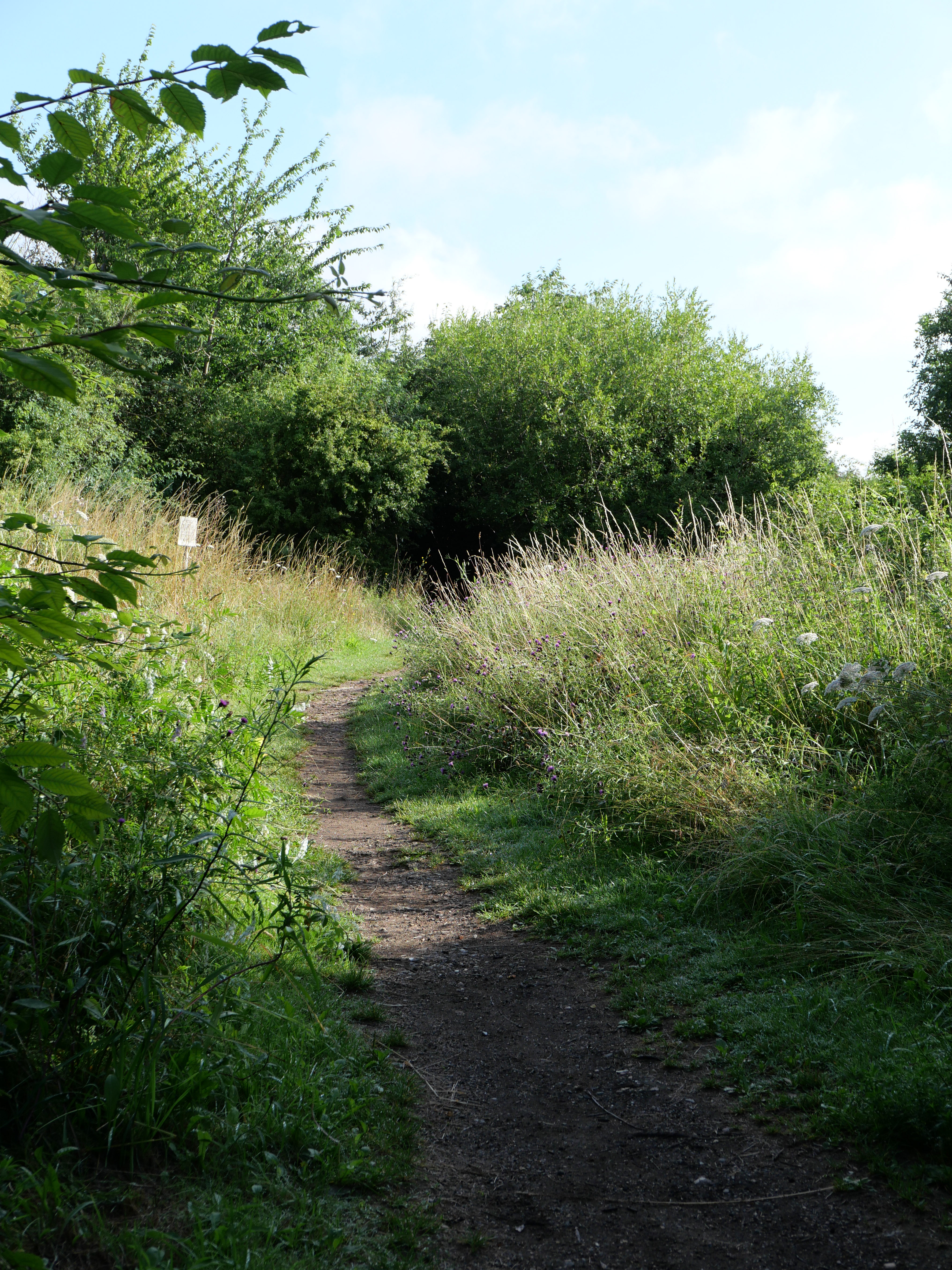

Focusing with the lens was quick, but one area where the D-Lux 8 is showing its aging parts is with its creaky old contrast-detect autofocus which struggled a few times to pick up exactly what I wanted to focus on despite using selective focus. The camera can detect eyes and faces, but there is no animal, bird, or vehicle detection to be found here.
Video on the D-Lux 8 is fine, with a fairly standard 4K30P 4:2:0 8-bit as the top setting although at a hefty crop, and FHD 60p being the highest frame rate you can get. Video quality is decent for social media, but it is really not going to challenge any of the current best vlogging cameras out there. Again, the older autofocus puts the brakes on, with focus tracking just not being as sticky or accurate as cameras with more modern autofocus systems.


Leica D-Lux 8: Verdict
You’re a camera company, compact cameras are back from the dead and sales are exploding, but you have nothing new in the works, what do you do? You relaunch an old camera of course – with just enough design tweaks that it can pass as a new one.
The Leica D-Lux 8 is essentially the same camera that was released six years ago but with a slightly redesigned body. It has taken more than a few design cues from the Leica Q3, although that is no bad thing as, like the Q3, it is a great-looking camera, and naturally, with that red do – a camera to be seen with. The design updates are also functional, with Leica’s simplified button and menu system a welcome takeover from the Panasonic-designed system on the previous version.
However, when it comes to camera performance, the D-Lux 8 internal parts show their age a little. Thankfully, images still look good from the 17MP (4:3) sensor, providing plenty of quality for social feeds, which the aspect ratio switch is also perfect for (and adds a fun element of experimentation with perspectives). However for video – look elsewhere. With dismal autofocus and mediocre quality, video pales in comparison to more modern rivals or indeed, most smartphones.
The premium compact camera landscape is pretty sparse, and despite its flaws, Leica actually makes a compelling case for a fun-to-use camera that just doesn’t try to be more than it is, and for a lot of people, that will be enough. And surprisingly, it's a Leica camera that many of us can actually afford.
Features | The upgrade to .DNG files is welcome, but the D-Lux 8 brings not much else that is new, with the same 17MP sensor, lens, and battery as the last model. | ★★★★☆ |
Design | Stunning Leica design as usual, complete with new simplified Leica menu system. Lightweight to carry and puts the compact in premium compact camera. | ★★★★☆ |
Performance | Stills performance is good, with the 17MP sensor and lens providing good quality, and the aspect switch is useful. However the autofocus is showing its age and video is a real weak point. | ★★★☆☆ |
Value | It's a Leica, so it's not cheap, but it's actually in the affordable range for many. Although arguably you can get so much more for your money if you aren’t insistent on this exact form of compact camera. | ★★★☆☆ |
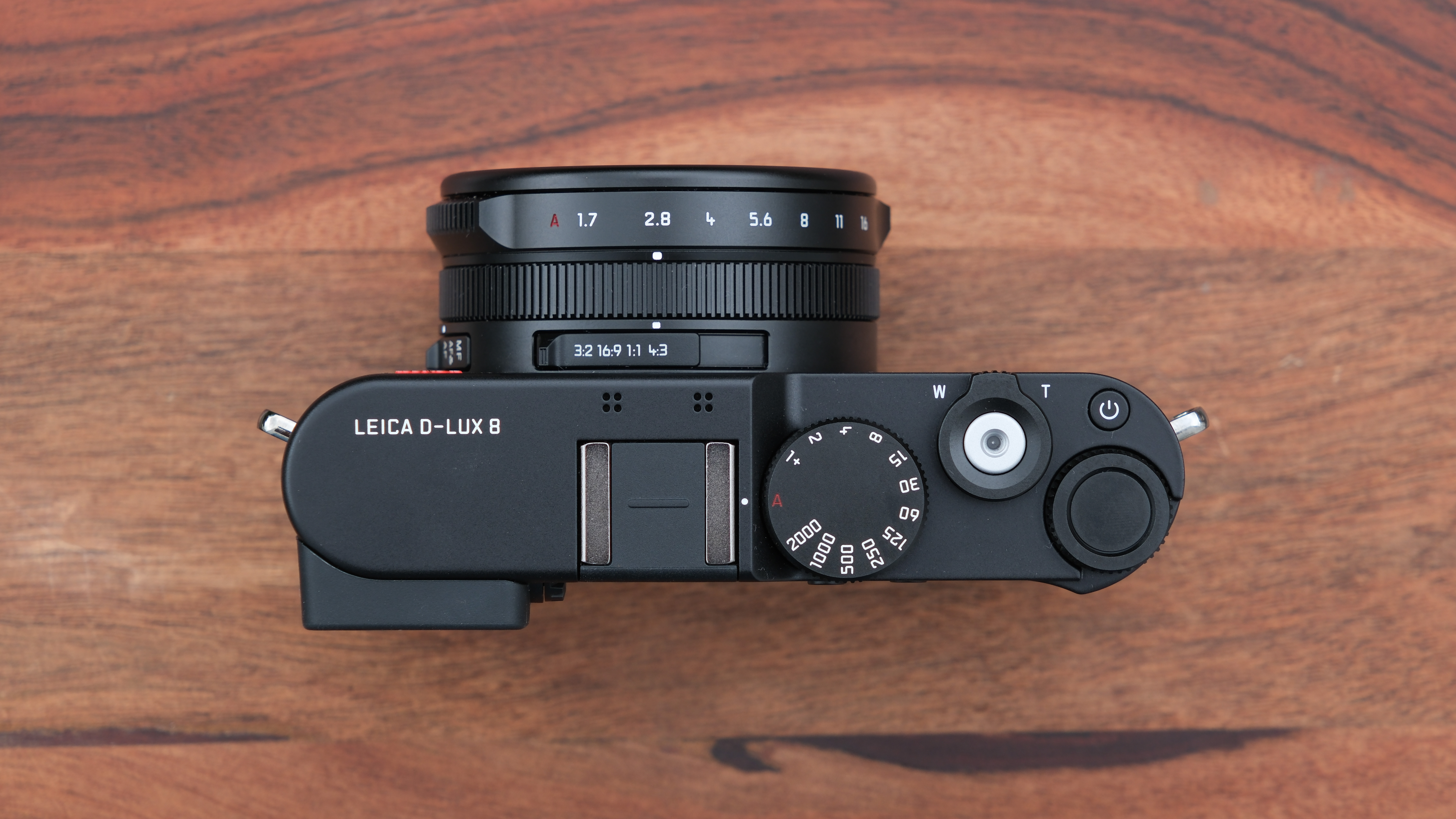
✅ Buy it...
- You want a fun and simple to use camera that can slip right into a pocket for a range of photography situations.
- You are looking for the most affordable way to get a Leica camera.
🚫 Don't buy it...
- If you will be shooting a lot of video then there are higher quality compact video cameras out there.
- If you want a big zoom range, then this camera tops out at 75mm which won’t be enough for something like a safari, I’d check out the best bridge cameras instead.
Alternatives
Fujifilm X100VI
The most obvious comparison is probably the Fujifilm X100VI, although while they are both considered compact cameras, they are very different concepts. The Fuji is a powerful modern camera with a larger sensor and is going to trump the D-Lux on pretty much every spec. Although for portability, the D-Lux is lighter, smaller, and has the versatility of a zoom lens (instead of having a fixed 35mm lens).
Sony ZV-1 II
I would consider the closest alternative to be the Sony ZV-1 II, it's a versatile compact with a zoom lens, although not one that stretches quite the same focal length. The ZV-1 II has a big advantage when it comes to being a hybrid compact, with its video being some of the best possible at this price point and form factor.

Gareth is a photographer based in London, working as a freelance photographer and videographer for the past several years, having the privilege to shoot for some household names. With work focusing on fashion, portrait and lifestyle content creation, he has developed a range of skills covering everything from editorial shoots to social media videos. Outside of work, he has a personal passion for travel and nature photography, with a devotion to sustainability and environmental causes.
